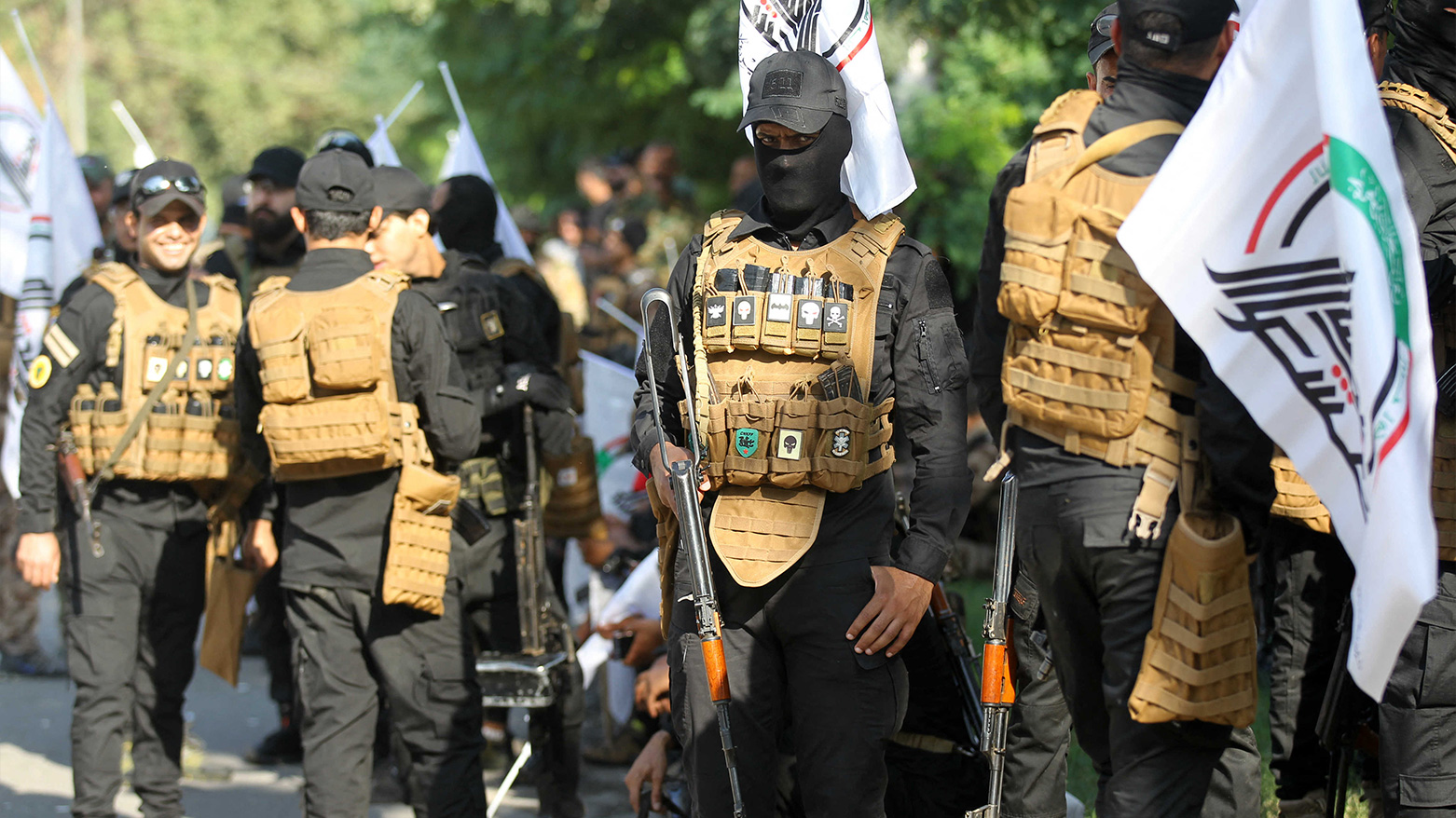Axis Cracks: Iran-Backed Militias in Iraq Consider Disarmament
One masked commander from Kataib Hezbollah told Reuters: “Trump is ready to take the war with us to worse levels, we know that, and we want to avoid such a bad scenario.”

By Kamaran Aziz
ERBIL (Kurdistan24) – In what could mark a major turning point in Iraq's security landscape, several powerful Iranian-backed militia groups are reportedly prepared to disarm for the first time in an effort to prevent open conflict with the United States under President Donald Trump.
According to a detailed report by Reuters, at least four of Iraq’s most prominent Shia militias—members of the so-called Islamic Resistance in Iraq—are now engaged in advanced discussions with the Iraqi government to explore options for disarmament and reintegration.
The development comes after months of behind-the-scenes pressure from Washington, which has repeatedly warned Baghdad that failure to rein in these paramilitary groups could trigger direct U.S. military action.
U.S. officials have delivered stark warnings to Iraqi leadership since Trump’s return to office in January, demanding that militias either disband or face potential airstrikes.
According to senior commanders and Iraqi political sources interviewed by Reuters, the Trump administration’s posture has prompted rare introspection and strategic recalibration among militia leaders. One masked commander from Kataib Hezbollah, the most powerful of the factions, told Reuters: “Trump is ready to take the war with us to worse levels, we know that, and we want to avoid such a bad scenario.”
The militias reportedly considering disarmament include Kataib Hezbollah, Nujabaa, Kataib Sayyed al-Shuhada, and Ansarullah al-Awfiyaa—groups long regarded as extensions of Iran’s Islamic Revolutionary Guard Corps (IRGC) and key pillars of Tehran’s regional influence. Together, these factions command an estimated 50,000 fighters and possess stockpiles of advanced weaponry, including long-range missiles and anti-aircraft systems.
Although Iran has supported these groups for decades, Reuters reports that the IRGC has now given its blessing to any tactical decisions the militias deem necessary to de-escalate tensions with the U.S. and Israel. This signals a remarkable pivot in strategy as Iran’s “Axis of Resistance”—a regional network of proxy forces—faces unprecedented pressure following the Gaza war, sustained Israeli strikes on Hezbollah, U.S. air assaults on the Houthis in Yemen, and the growing instability in Syria.
Inside Iraq, Prime Minister Mohammed Shia al-Sudani is spearheading the effort to defuse the crisis. Farhad Alaaeldin, Sudani's foreign affairs adviser, told Reuters that the government remains committed to ensuring that all weapons in the country are brought under state control through “constructive dialogue with various national actors.”
Senior Shia politician Izzat al-Shahbndar said the talks between Sudani and militia leaders are “very advanced,” and that the factions “are not acting stubbornly.” Rather, they appear “fully aware” of the risk of U.S. retaliation. Options under consideration include transforming the armed groups into political parties or formally integrating them into Iraq’s national armed forces.
Evidence on the ground suggests that preparations for de-escalation are already underway. According to Reuters, some militia groups have begun evacuating headquarters in cities like Mosul and Anbar and significantly reduced their public presence since mid-January. Commanders have reportedly increased personal security measures, frequently changing locations and communication devices in anticipation of potential U.S. airstrikes.
The U.S. State Department, in response to Reuters’ inquiry, reiterated that “these forces must respond to Iraq's commander-in-chief and not to Iran.” A U.S. official, while cautious, acknowledged that previous pressure had at times led to temporary militia retreats, but remained skeptical of the durability of any disarmament.
Still, the potential dismantling of the Islamic Resistance in Iraq would be a landmark development. Since their formation in the wake of the 2003 U.S.-led invasion, these groups have evolved into powerful entities that often rival Iraq’s official military in strength and political influence.
The stakes are high. The militias have claimed responsibility for dozens of attacks on U.S. and Israeli targets in Iraq and Syria since the outbreak of the Israel-Hamas war in October 2023. A drone strike by one of the groups last year killed three American soldiers in Jordan. According to Reuters, Secretary of Defense Pete Hegseth directly urged Sudani in March to prevent further strikes in solidarity with Hamas, warning that continued aggression would invite a more forceful American response.
While disarmament is far from guaranteed and talks remain fragile, the willingness of Iran-backed militias to even consider such a move marks a notable shift in the power dynamics shaping Iraq’s future. As regional tensions continue to simmer and U.S. resolve stiffens, Baghdad finds itself at the center of a delicate balancing act between its strategic ties with Tehran and Washington.
For the first time in decades, the axis of Iran-aligned militancy in Iraq appears to be blinking, driven by the specter of renewed American firepower—and the urgent need for a political exit from an increasingly combustible standoff.
